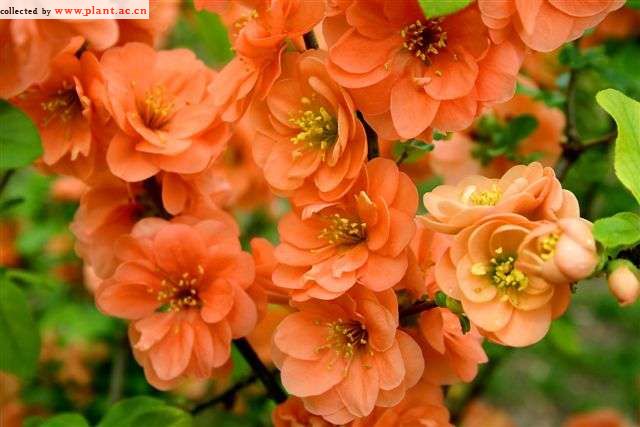Chaenomeles japonica var. alpinaFlowering quince
科:蔷薇科
Family:Rosaceae
属:木瓜属
common name:Flowering quince
introduce:Plant Type: Deciduous shrub
Family: Rosaceae
Missouri Native: No
Native Range: Japan
Height: 0.75 to 1 foot
Spread: 2 to 3 feet
Bloom Time: April
Bloom Color: Orange-red
Sun: Full sun to part shade
Water: Medium moisture
Maintenance: Low
General Culture:
Easily grown in average, medium wet, well-drained soil in full sun to part shade. Best flowering occurs in full sun. Adapts to a wide range of soil conditions, but prefers well-drained loams. Occasional renewal pruning in spring after flowering will improve the bloom for the following year.
Noteworthy Characteristics:
This flowering quince variety is a dwarf, deciduous shrub which typically grows to only 1 tall and features a network of interlaced, thorny stems. Abundant orange-red flowers bloom in spring before the foliage. Tiny, rounded leaves (to 3/4" long) emerge after the flowers and are slightly brownish as they open but mature into a glossy dark green. Small, pleasantly scented, apple-like, greenish yellow fruit (quinces) ripen in fall, and, although quite bitter and unappetizing when fresh, may be used in jellies and preserves.
No serious insect or disease problems. Flowering quince may develop fungal diseases in hot weather resulting in early defoliation. In severe winters, the flower buds may be killed. Due to the denseness of the branches, this shrub may collect windblown trash that is difficult to remove.
Uses:
Chaenomeles japonica var. alpina is attractive as a foundation planting, in a shrub border or rock garden, or as a low (9-12 inches tall) edger or hedge. Branches may be brought inside in mid-winter for forced flowers.
